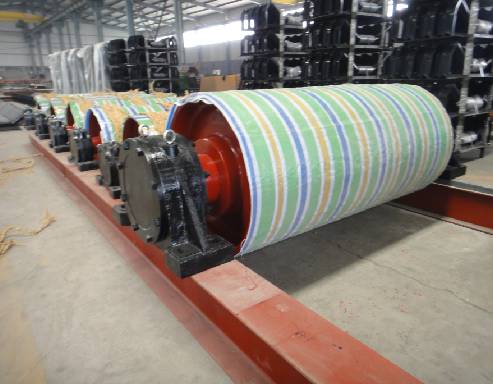 Afrikaans
Afrikaans  Albanian
Albanian  Amharic
Amharic  Arabic
Arabic  Armenian
Armenian  Azerbaijani
Azerbaijani  Basque
Basque  Belarusian
Belarusian  Bengali
Bengali  Bosnian
Bosnian  Bulgarian
Bulgarian  Catalan
Catalan  Cebuano
Cebuano  Corsican
Corsican  Croatian
Croatian  Czech
Czech  Danish
Danish  Dutch
Dutch  English
English  Esperanto
Esperanto  Estonian
Estonian  Finnish
Finnish  French
French  Frisian
Frisian  Galician
Galician  Georgian
Georgian  German
German  Greek
Greek  Gujarati
Gujarati  Haitian Creole
Haitian Creole  hausa
hausa  hawaiian
hawaiian  Hebrew
Hebrew  Hindi
Hindi  Miao
Miao  Hungarian
Hungarian  Icelandic
Icelandic  igbo
igbo  Indonesian
Indonesian  irish
irish  Italian
Italian  Japanese
Japanese  Javanese
Javanese  Kannada
Kannada  kazakh
kazakh  Khmer
Khmer  Rwandese
Rwandese  Korean
Korean  Kurdish
Kurdish  Kyrgyz
Kyrgyz  Lao
Lao  Latin
Latin  Latvian
Latvian  Lithuanian
Lithuanian  Luxembourgish
Luxembourgish  Macedonian
Macedonian  Malgashi
Malgashi  Malay
Malay  Malayalam
Malayalam  Maltese
Maltese  Maori
Maori  Marathi
Marathi  Mongolian
Mongolian  Myanmar
Myanmar  Nepali
Nepali  Norwegian
Norwegian  Norwegian
Norwegian  Occitan
Occitan  Pashto
Pashto  Persian
Persian  Polish
Polish  Portuguese
Portuguese  Punjabi
Punjabi  Romanian
Romanian  Russian
Russian  Samoan
Samoan  Scottish Gaelic
Scottish Gaelic  Serbian
Serbian  Sesotho
Sesotho  Shona
Shona  Sindhi
Sindhi  Sinhala
Sinhala  Slovak
Slovak  Slovenian
Slovenian  Somali
Somali  Spanish
Spanish  Sundanese
Sundanese  Swahili
Swahili  Swedish
Swedish  Tagalog
Tagalog  Tajik
Tajik  Tamil
Tamil  Tatar
Tatar  Telugu
Telugu  Thai
Thai  Turkish
Turkish  Turkmen
Turkmen  Ukrainian
Ukrainian  Urdu
Urdu  Uighur
Uighur  Uzbek
Uzbek  Vietnamese
Vietnamese  Welsh
Welsh  Bantu
Bantu  Yiddish
Yiddish  Yoruba
Yoruba  Zulu
Zulu lagging rubber
The Significance of Lagging Rubber in Industry
Lagging rubber, often referred to as rubber lagging, is a crucial component in various industrial applications, particularly in the field of conveyor systems and machinery. This material, typically composed of natural or synthetic rubber, is primarily used to enhance the performance and durability of equipment in a cost-effective manner. Understanding the benefits and applications of lagging rubber is essential for industries that rely on heavy machinery, as it plays a significant role in improving efficiency and safety.
One of the primary advantages of lagging rubber is its ability to provide superior traction. In conveyor systems, for instance, the surface of the conveyor belt can become slippery, especially in environments where moisture or oil is present. By applying a layer of rubber lagging to the pulleys or drums of the conveyor, the grip is significantly enhanced, preventing slippage and ensuring that materials are transported smoothly. This improvement in traction not only increases productivity but also reduces the risk of material spills, which can lead to costly downtime and safety hazards.
Another notable benefit of lagging rubber is its protective capabilities
. Machinery components, particularly those that experience high friction and wear, can greatly benefit from the installation of rubber lagging. The rubber acts as a buffer, absorbing impacts and reducing wear on both the machinery and the products being transported. This protective layer extends the lifespan of equipment, reduces maintenance costs, and minimizes the need for frequent replacements, making it a smart investment for businesses.lagging rubber

Beyond traction and protection, lagging rubber also plays a role in noise reduction. Industrial environments can be exceedingly noisy, with conveyor systems contributing significantly to the overall sound levels. The rubber material has excellent sound-dampening properties, which can help lower noise transmission. This not only fosters a more comfortable work environment for employees but also helps companies comply with occupational safety and health regulations regarding noise levels.
The versatility of lagging rubber extends to various applications across different industries. In mining operations, for instance, this material is used extensively due to the harsh conditions present, including exposure to dust, moisture, and heavy loads. The ability of rubber lagging to withstand such environments makes it indispensable in ensuring the reliability of conveyor systems used for transporting ore and other materials. Similarly, in food processing plants, specialized rubber lagging can be formulated to meet food safety standards, thereby preventing contamination while providing the necessary grip and durability.
Moreover, the adoption of advanced materials and technologies in the production of lagging rubber has led to improved formulations that enhance wear resistance, flexibility, and overall performance. Customization options are available, allowing industries to select lagging rubber tailored to specific operational needs, further amplifying its effectiveness.
In conclusion, lagging rubber is a vital asset for many industries, contributing significantly to operational efficiency, equipment longevity, and workplace safety. Its ability to provide traction, reduce wear, and dampen noise makes it indispensable in conveyor systems and other machinery. As industries continue to evolve and demand higher performance standards, the importance of innovative materials like lagging rubber will only increase, marking it as a critical factor in the advancement of industrial technology.
-
Revolutionizing Conveyor Reliability with Advanced Rubber Lagging PulleysNewsJul.22,2025
-
Powering Precision and Durability with Expert Manufacturers of Conveyor ComponentsNewsJul.22,2025
-
Optimizing Conveyor Systems with Advanced Conveyor AccessoriesNewsJul.22,2025
-
Maximize Conveyor Efficiency with Quality Conveyor Idler PulleysNewsJul.22,2025
-
Future-Proof Your Conveyor System with High-Performance Polyurethane RollerNewsJul.22,2025
-
Driving Efficiency Forward with Quality Idlers and RollersNewsJul.22,2025





























